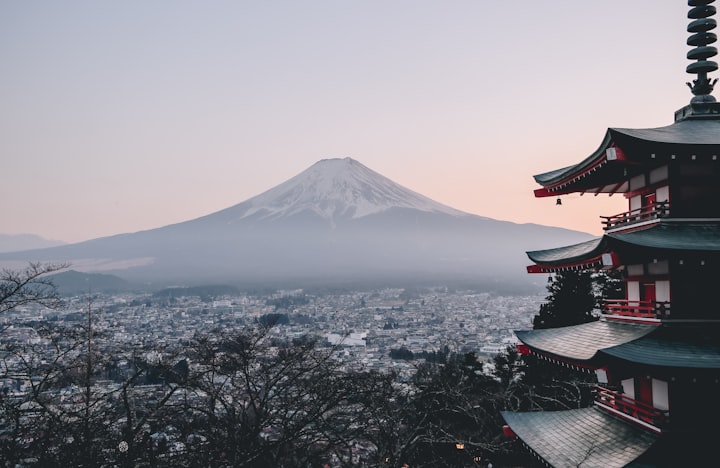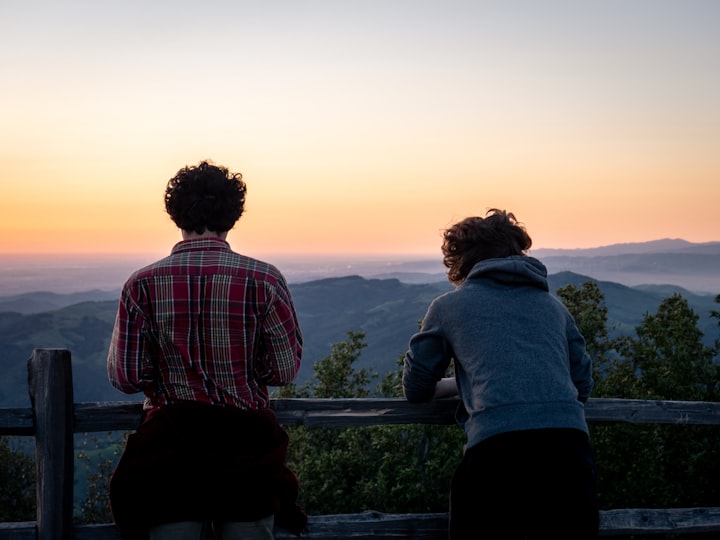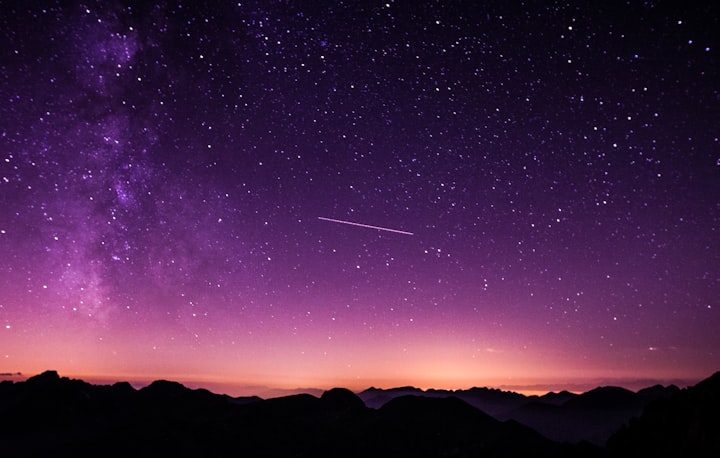
In Feb 2021, the Japan National Tourism Organization (JNTO) launched the “Go to Travel” campaign to stimulate its Corona-stricken tourism industry. Before the pandemic, over 30 million foreign tourists visited the island country every year. One of the top places for them was Mount Fuji. After the Coronavirus hit, the mountain encountered its first shutdown in 60 years.
Mount Fuji stands 12,400 feet above sea level, 62 miles from the capital Tokyo. One-third of the population can see it every day.
What does Mt Fuji mean to the Japanese? They say while the sakura (cherry blossoms) shows the sensitivity and grace of the Japanese, Mount Fuji shows tenacity and resilience.
It’s an active volcano that’s conceived a deep-seated sense of uncertainties in Japanese culture. Living by a giant mountain that may erupt anytime, the Japanese have shown a shrewd understanding of co-living with their neighbor.
The largest landlord
“If you love a person, love her like you love Mount Fuji. You can see her, but you can’t move her. ” — Japanese proverb.
“Do you know how to move Mount Fuji? The answer: walking to her.” — Japanese proverb.
Although land is privately owned in Japan, many believe the symbolic mountain is owned by the state. In the era of the Tokugawa Shogunate, Mt Fuji was owned by Tokugawa Ieyasu, Japan’s mightiest shogun (warlord). 1616, at his deathbed, Ieyasu donated the mountain to The Fujisan Hongū Sengen Taisha, the oldest temple in Japan.

At the beginning of the 20th century, the state seized the land of Mt. Fuji. One hundred years later, in 2004, the Japanese government returned to the mountain, but only the land that is beyond 11,000 feet. Today, the shrine organization owns over 1300 temples around the country. Obviously, the peak of Mt Fuji is one of its most significant properties.
Then the government rented it back for the tourism business, generating one of the largest landlords in the country. Although it’s a blur how much the state is paying for the rent, the deal is one of the most successful businesses in Japan. By a large margin, Mt. Fuji is Japan’s No1. tourism resort.
What’s more successful, most Japanese believe no one has ever owned Mt. Fuji. It belongs to every single citizen of Japan.

Diamond Fuji
Mt. Fuji is the only mountain on this planet that sits on flat land with a 360-degree view of its peak. In the morning, at the top of the mountain suddenly appears a giant diamond, like it’s spurted out by the earth. The splendid rays travel afar with shifting colors. The sunrise shows green and white; the sunset turns red and yellow with heavy HALO. It’s one of the Fuji wonders: Diamond Fuji.
The sensation of watching it largely varies from afar and near. When you are in her bosom, you will feel the primitive power and unpredictable personality.
“Awakening Japan: the Diary of a German Doctor” was a popular book among west tourists about Japan. The author was a Geman doctor, Erwin Bälz. He came to Japan in the Meiji Era, traveled around, and settled in Edo — now called Tokyo. Besides his notable contribution to Japanese medical science, he wrote a lot about Japanese tradition and culture.
“Undoubtedly, Mt. Fuji has the most beautiful shape in the world. Its incredible height is a signpost for the travelers around the country.” He wrote about Mt. Fuji.
Climbers’ haven
More and more west travelers and adventurers came to Japan after the Meiji Restoration. Many west mountain climbers fell in love with Mt. Fuji. It’s now one of the dream mountains for climbers across the world.
It’s reported that Japan didn’t have skiing sport until the foreign visitors started it at Mt. Fuji. 1911, a major from the military of the Austro-Hungarian Empire and his friend skied down from the ninth station (11,800 feet) — the tenth station was at the peak 12,200 feet. It’s the earliest record of skiing in Japan. The visitors can read the story at a memorial stone in the fifth station.
The first ascent by a foreign visitor, Sir Rutherford Alcock, was in September 1860. It was big news on the day. Surrounded by a herd of dogs and one hundred or so assistants, he ascended Mt. Fuji in 8 hours and descended in 3 hours. He inked his adventure with abundant details in his successful journal “The Capital of the Tycoon”, which attracted more mountain climbers to explore Mt. Fuji.
Many Japanese believe that the ascent of Mount Fuji is one of the things that must be done in a lifetime, even a pilgrimage that must be accomplished. The spiritual aura of Mt. Fuji started with the Buddhists around the country when they set foot on the mountain for their practices. Then the distance worship turned to the ascent worship. More ordinary people came for the ascent, hoping to receive some superpower from the mysterious mountain.
Pick the route that fits you
For a new visitor, the “once per life” Fuji climbing should be well-prepared.

The snow begins to melt in June. The peak is open to the tourists from July to Sept, admin fee 1000 yen ($9) per person. You will receive a little wooden plate that you can choose to brand your name at the summit.
There are four routes to climb the mountain:
1, The Yoshida Trail in yellow on the map. Equipped with the best facilities, it’s the most popular route for new climbers. It has separate trails for ascent and descent.
2, The Fujinomiya Trail in blue. It’s shorter, steeper, and rockier than Yoshida. It’s also popular among climbers.
3, The Subashiri Trail in red. It’s harder than the last two trails but you will be rewarded by the great views.
4, The Gotemba Trail in green. Long, difficult, having the fewest service huts, but it’s the least congested trail.
It’s not recommended to make “bullet-ball ascent”, aka “one-day ascent”. Most climbers will take the tour of “two days plus one night”: first-day climbing, staying one night at the service hut, second-day hitting the summit.
Book the service huts at least two months in advance. The closer they are to the summit, the harder to book them.
Once you hit the summit, there are a lot more things to explore than just a couple of rocks and flags. You will not miss the Fuji Summit Post Office, where you can buy the ascent certificate attached with original stamps. Toss it right into the onsite mailbox, surprise your family at your home address.
You will visit Japan’s highest shrine — Fujisan Hongu Sengen Taisha. It’s also the headquarters of the Shegen shrine — yes, the largest landlord in Japan. You will step in to pay homage, buy holy books and seals.
The Suicide Forest
Every object has a shadow under the sun. The one of Mt. Fuji’s is almost too dark.
At its northwestern foot sits Aokigahara, aka the Sea of Trees. It sprawls over 12 sq miles of hardened lava that flooded from Mt. Fuji when it erupted in 864. Looking through some barren landscape, it’s more like a frozen ocean. The frees and vines are so thick that, walking in the depth of the forest, you will lose not only the peak of Mt. Fuji but also the sun. It’s said there are mysterious minerals in the lava that could cripple GPS devices.
For many visitors, it’s a stop at their Mt Fuji tour. For some, it’s the destination of life.
Here comes its third name, “the Suicide Forest”. Aokigahara is the second popular place in the world for people attempting suicide. The first one is the Golden Gate Bridge in SFO, U.S.
Walking along the trails, you will see plastic or foil hanging on the trees, sometimes colorful ribbons swaying in the breeze. They may never be able to see their owners come back for them.
Spring is the season. Hikers swarm to the forest, among them the sad souls. The watching teams built by the police and volunteers patrol around the territory. Signposts and banners are lifted to warn people:
Don’t go any further.
Once you get in, you will not be able to regret it.
People say the warning is counterintuitive, given the beautiful nature in the forest. Only the cold, hard steel at the Golden Gate Bridge would push people to make the last jump. Some say, however, looking at the serene peak of Mt. Fuji, they almost believe that it’s more beautiful on the other side of the world.
For most Japanese, Mt. Fuji is a life accelerator. Whether they are happy or upset, the mountain will double the sensation. Japan is not a small country in terms of population (over 100mil), one-third of which will see it any time when they raise their heads, a little travel will easily make the rest do. It’s not an overstatement that every moment, every Japanese is receiving energy from Mt. Fuji. A Japanese author described it as “the Seeing Power” — the mountain sends endless power to every people, who sees it.
The perfect shape of a pyramid ascends to eternity, resembling the spirit of pursuing perfection. Keep a heart of gratitude, live a life as simple and calm as Mt. Fuji, pursue the future with all the power — it’s the Japanese secret to living a long, happy life.
About the Creator
Bond Wang
Hey, I write about life, culture, and daydreams. Hope I open a window for you, as well as for myself.






Comments
There are no comments for this story
Be the first to respond and start the conversation.